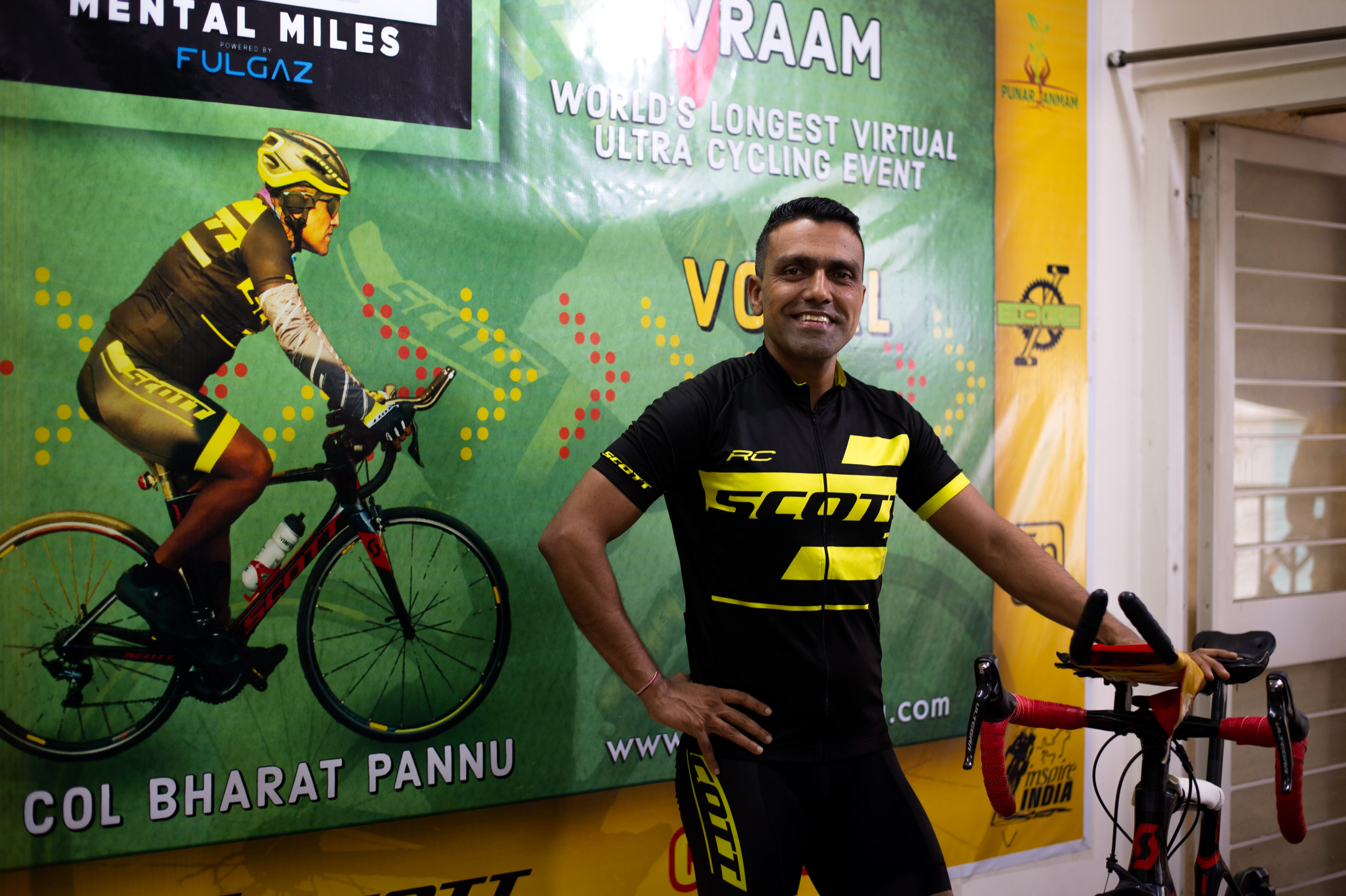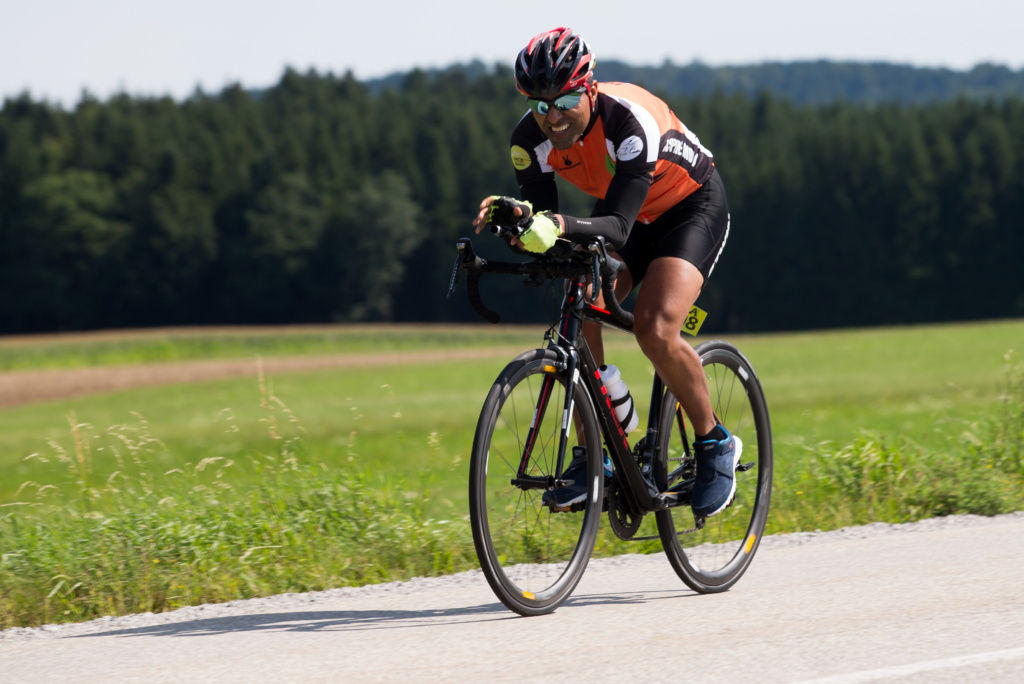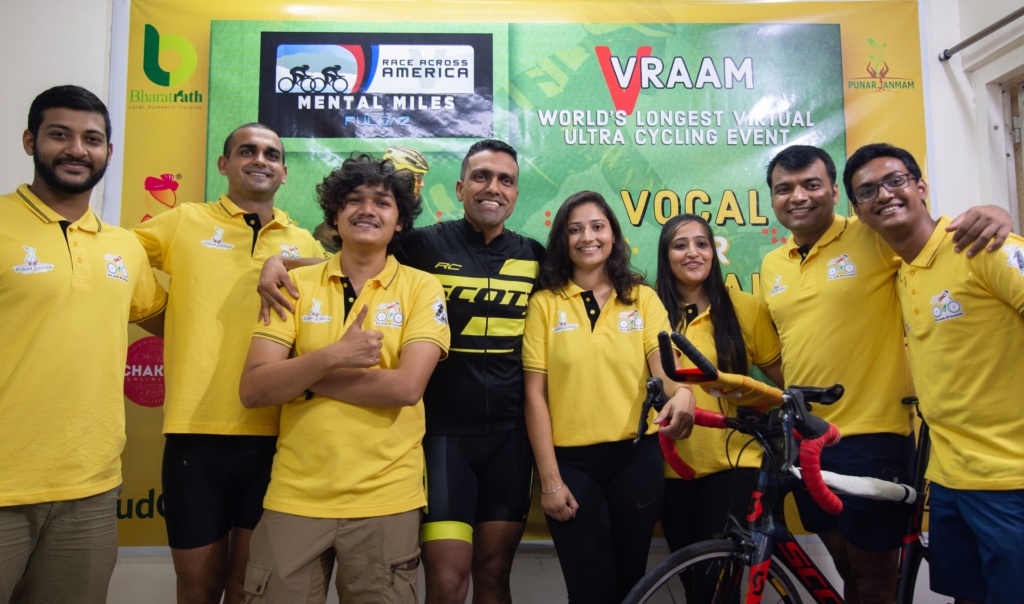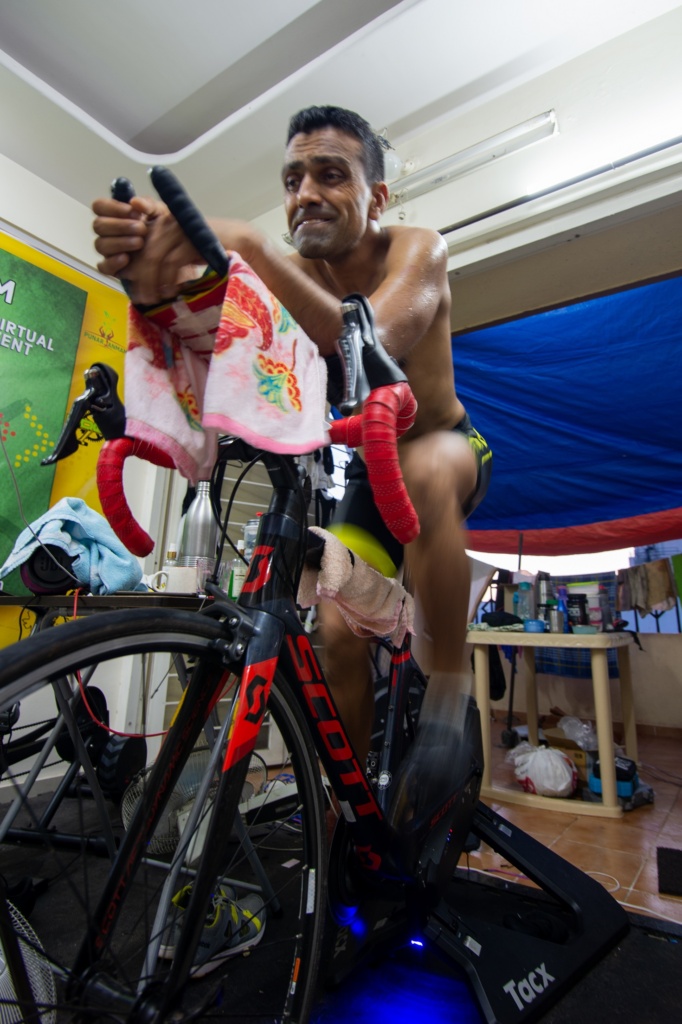Bharat Pannu pulled off the mammoth distance of 4,086km at the first edition of the Virtual Race Across America to finish on the podium

Photo courtesy: Bharat Pannu
First published: https://www.thehindubusinessline.com/blink/meet/bharat-pannu-winner-of-virtual-ultra-cycling-race-in-us/article32034919.ece
Virtually unstoppable
Bengaluru resident Bharat Pannu earned ultra cycling stripes at a virtual race marathon across the US last month
At 6.30pm on June 28, 37-year-old Bharat Pannu finally stopped pedalling his bicycle and smiled. It had been his longest race yet – a staggering 4,086km that he had covered over the last 12 days. Yet beyond the mammoth distance, it was unlike anything that he had taken on in the past, considering he hadn’t moved an inch from his starting point through the course of the ride.
Among the many podiums that Pannu has bagged over the last four years, the third-placed finish was special for more than one reason. When the Race Across America (RAAM) – it runs over 4,800km from the west to the east coast of America – scheduled for June was cancelled due to the Covid-19 pandemic, the organisers announced the inaugural Virtual Race Across America (VRAAM). It would feature 17 cyclists from around the world, who would ride on stationary trainers in the comfort of their homes. Pannu, who had been diligently training for RAAM over the last two years, decided to test new waters and signed up for VRAAM.
“My training had to continue indoors after the lockdown was announced. It took me a while to get used to the trainer, but I eventually pulled off a ride where I was in the saddle for close to 17 hours, so I knew I was ready,” Pannu tells BLink.

The challenges associated with this 3,000-mile VRAAM (4,542km) were as unique as the racing format. While riders would be shielded from the elements in the outdoors, cycling indoors was a mental test of perseverance, besides of course the physical effort of tackling a course that featured an elevation gain of 71,000 metres. Pannu and his crew were well aware that the biggest hurdle would be the monotony of the entire effort.
“Since it was happening for the first time, nobody had any experience on how to tackle the distance, nor what it was like to be in the saddle for so long. The goal initially was to simply finish,” Pannu says.
Since most of the team was based out of Pune, a crew member’s living room in Baner was readied for the race. The route map was loaded on an application, which in turn simulated the gradients on the trainer. While Pannu was fired up by his boisterous crew at the start, he soon lost momentum due to software issues during the first five hours. But once he settled into a rhythm, he went without sleep for two nights to build on the mileage. The crew soon realised just what Pannu was up against.
“I lost 4kg by Day 3 which really had us worried since it could have led to a medical emergency. So my calorie intake had to be doubled to maintain the balance,” Pannu says.

As he focussed on crunching miles, the indefatigable crew was kept on its toes, tending to everything from massages to entertainment, besides Pannu’s dietary needs while dishing out nutritious delicacies to keep their rider motivated. The sleep breaks were planned in advance but never exceeded three hours at a stretch. On average, Pannu was in the saddle for about 21 hours each day.
It took steady progress for him to hit third spot on Day 7. Besides long hours, it was the inclines that really tested Pannu’s abilities, taking a severe toll on his knees despite all the precautions in place. The saddle sores too made things difficult as the race progressed and the constant friction left him with swollen toes and bloody blisters to deal with. But by the morning of Day 11, Pannu had battled the odds to ride past the official finisher’s distance of 3,248km (The original distance of 4,542km was reduced by the organisers for the well-being of the riders). Here on, the winner would be the rider who had gone the farthest after 12 days.

On the final day, Pannu was in third spot with a slender 20km lead over Brazilian Marcelo Soares – an experienced rider who has finished the Trans Siberian Extreme and RAAM in the past.
“He was well rested and gave me a tough time. But as the race progressed, we realised our potential and the crew wanted nothing less than a podium finish,” Pannu says.
Though the competition was never physically around him, the real-time leaderboard gave precise data on the speed and progress of each rider. Pannu held off Soares until the final countdown to finish the race among nine riders and third behind Hirokazu Suzuki (4539km) and Lee Putnam (4,144km), rounding off a spectacular first for Indian ultra cycling.
“The race may be unpredictable, but the one thing that you can be certain of is pain. And I train to bear the pain,” Pannu says.
“My crew will kill me when they see this, but I’ll be happy to do it all over again,” he adds.